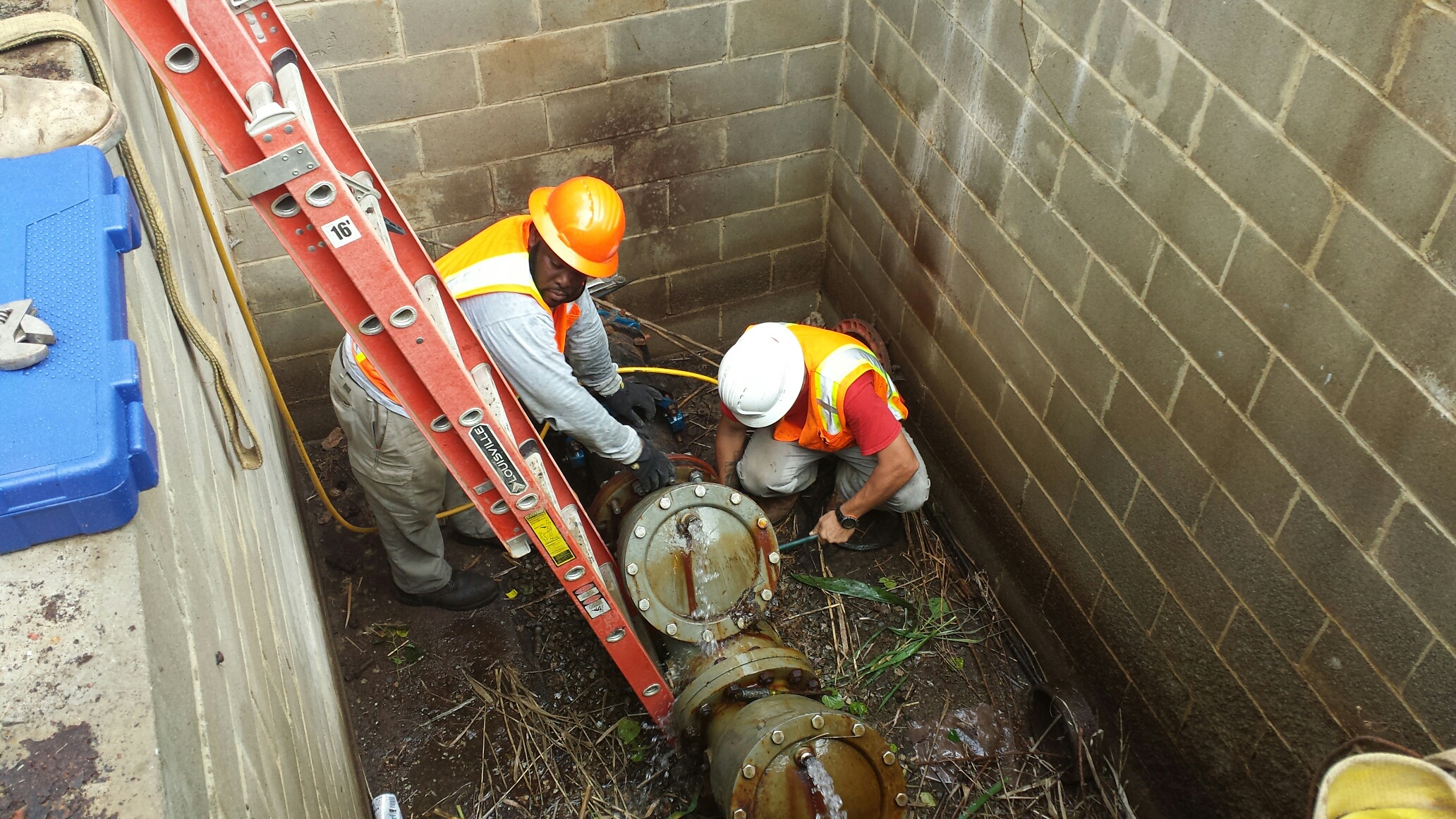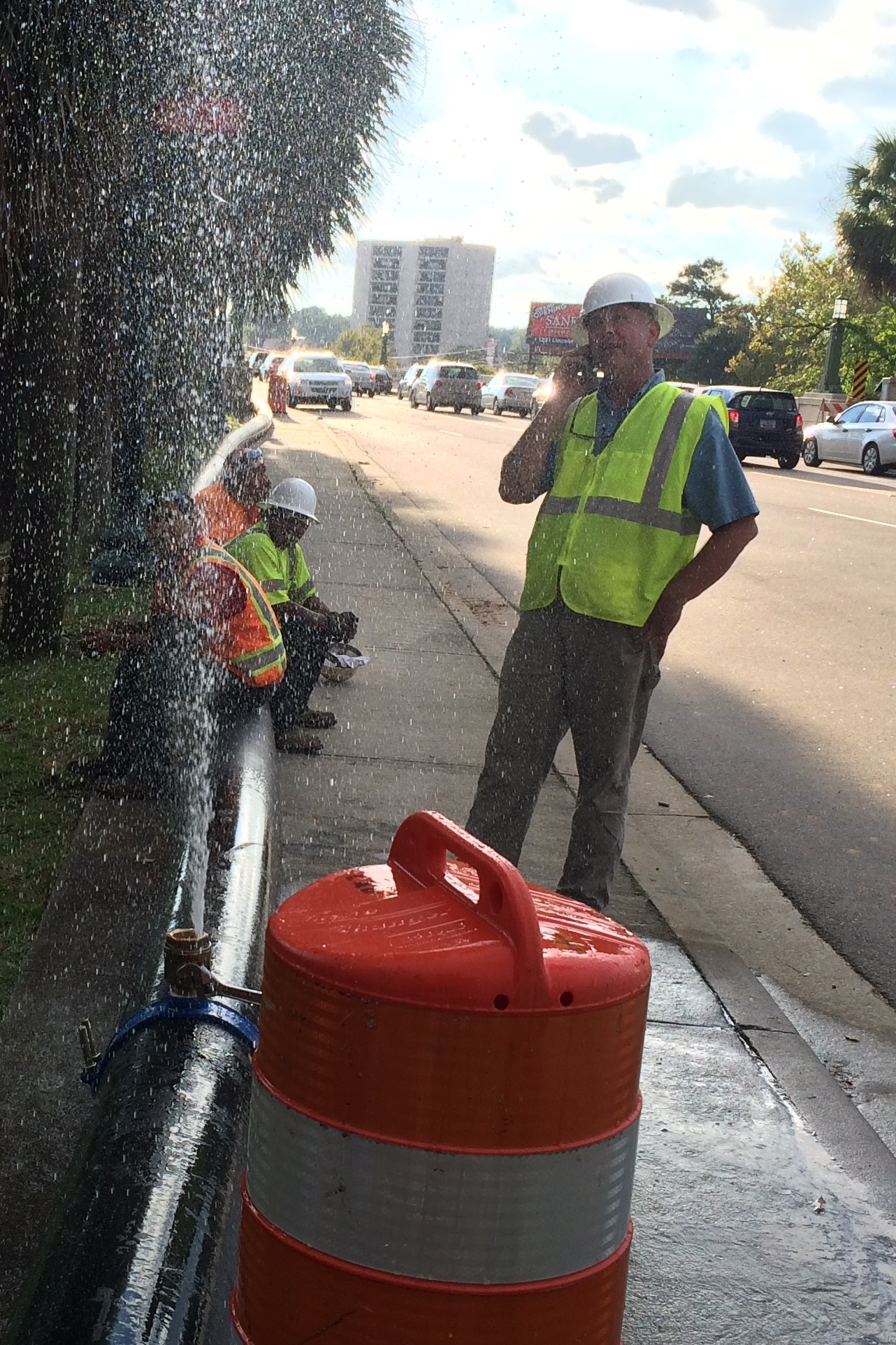As the Midlands dealt with breached dams and crumbling roads following the historic October flood, Columbia officials were faced with the monumental job of providing clean, safe water to their utility customers.
They found help from their neighbors.


Cayce (top) and West Columbia (bottom) provide access to their
water supply to help stabilize Columbia’s water system.
In the aftermath of the flood, Columbia had to stabilize raw water intake and output in a system that was experiencing multiple line breaks. The cities of West Columbia and Cayce, just across the Congaree River from the capital city, answered Columbia’s call for help and provided the city with additional water sources.
"Normally, Columbia is the one helping us," said Cayce City Manager Rebecca Vance. "We all know each other and work together."
Columbia took advantage of an existing emergency water connection it had with Cayce. The connection was established when Cayce needed help, said Joey Jaco, Columbia’s director of utilities and engineering. West Columbia placed a temporary water line across the Gervais Street Bridge to serve as another water source. The SC Department of Transportation also was part of that process and was instrumental throughout the response efforts, Jaco said.
Having that extra supply of water from its neighbors helped assure that Columbia was able to meet the needs of its customers and stabilize its water supply, Jaco said.
"Because the Cayce connection was already established, it was as simple as installing the pumps that helped supply our system," Jaco said. "West Columbia was a little more of a challenge as it also required installing a temporary pipe in addition to the pumps."
For both Cayce and West Columbia, separate contractors installed the pumps and made the connections. After securing permission from the other entities, Columbia staff managed the contractors working on the project, he said.
"We do our best to maintain a good working relationship with our neighboring governments and have a regional understanding and appreciation for what the other entities have available," Jaco said. "It was reassuring to know that our neighbors were willing to assist us in our time of need."
Jaco said the experience also reaffirmed the value of the existing water connection to Cayce.
Vance said Cayce has used that connection with Columbia two times in the five years she has been with the city—once when response to a recycling plant fire caused a strain on Cayce’s water system and again when a main water line was damaged. She hopes the cities will look at the possibility of adding a bigger line (it is currently a 10-inch line) and putting pumps on both sides of the river (or using pumps that are easier to move).
"Redundancy and interconnections—you can’t have enough of them," said Vance. "That’s my takeaway."
Brian Carter, West Columbia deputy city administrator and public information officer, said the strong working relationship among the cities and towns of the Midlands along with the Joint Municipal Water and Sewer Commission were evident in the days and weeks after the flood.
"Our crew at the water plant stayed focused," said Carter. "Job number one was to make sure we had clean water for West Columbia, make sure the pressure was right and make sure what we sent out was 100 percent right."
In terms of assisting Columbia, he said the utilities contacted the SC Department of Health and Environmental Control early in the process to be sure they had permission to increase capacity. "DHEC did a good job giving approval quickly."
"The cooperation among the municipalities went very smoothly," Carter explained. "To utility folks, it stressed the importance of connectivity. It takes an event like the flood to drive home there is more than municipality boundaries. We are interconnected."
Columbia also is a member of the South Carolina Water/Wastewater Agency Response Network. This allowed Columbia to request assistance from other state water and sewer utility providers. Those providers helped set up portable water filling stations and operate the reverse osmosis units that supplied the water to these stations, Jaco said. The utilities also supplied materials that helped Columbia repair portions of its wastewater system.
"Helping each other during a crisis is the nature of the business," Jaco said. "It’s what you do as a good neighbor."
